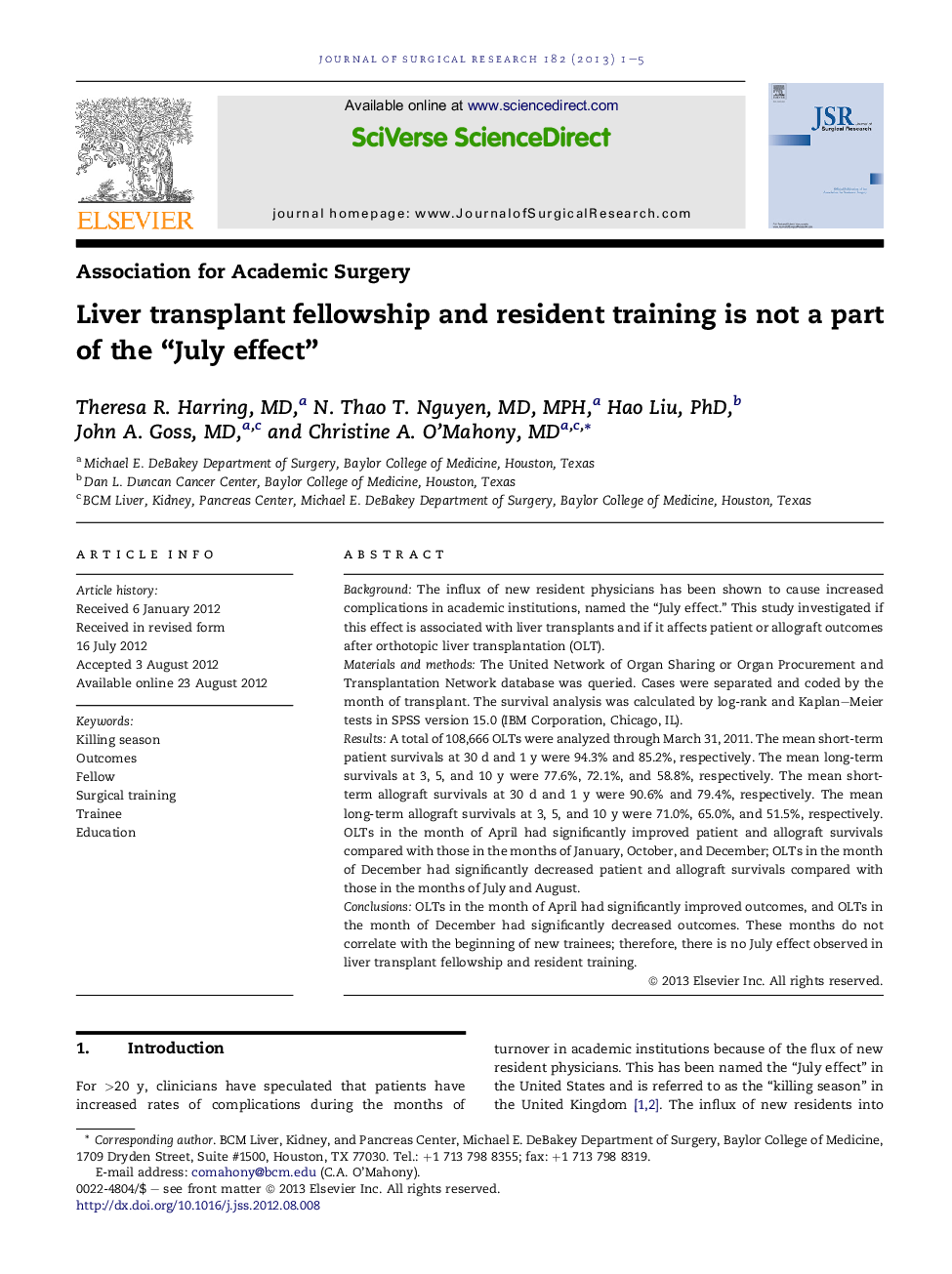| Article ID | Journal | Published Year | Pages | File Type |
|---|---|---|---|---|
| 4300927 | Journal of Surgical Research | 2013 | 5 Pages |
BackgroundThe influx of new resident physicians has been shown to cause increased complications in academic institutions, named the “July effect.” This study investigated if this effect is associated with liver transplants and if it affects patient or allograft outcomes after orthotopic liver transplantation (OLT).Materials and methodsThe United Network of Organ Sharing or Organ Procurement and Transplantation Network database was queried. Cases were separated and coded by the month of transplant. The survival analysis was calculated by log-rank and Kaplan–Meier tests in SPSS version 15.0 (IBM Corporation, Chicago, IL).ResultsA total of 108,666 OLTs were analyzed through March 31, 2011. The mean short-term patient survivals at 30 d and 1 y were 94.3% and 85.2%, respectively. The mean long-term survivals at 3, 5, and 10 y were 77.6%, 72.1%, and 58.8%, respectively. The mean short-term allograft survivals at 30 d and 1 y were 90.6% and 79.4%, respectively. The mean long-term allograft survivals at 3, 5, and 10 y were 71.0%, 65.0%, and 51.5%, respectively. OLTs in the month of April had significantly improved patient and allograft survivals compared with those in the months of January, October, and December; OLTs in the month of December had significantly decreased patient and allograft survivals compared with those in the months of July and August.ConclusionsOLTs in the month of April had significantly improved outcomes, and OLTs in the month of December had significantly decreased outcomes. These months do not correlate with the beginning of new trainees; therefore, there is no July effect observed in liver transplant fellowship and resident training.
